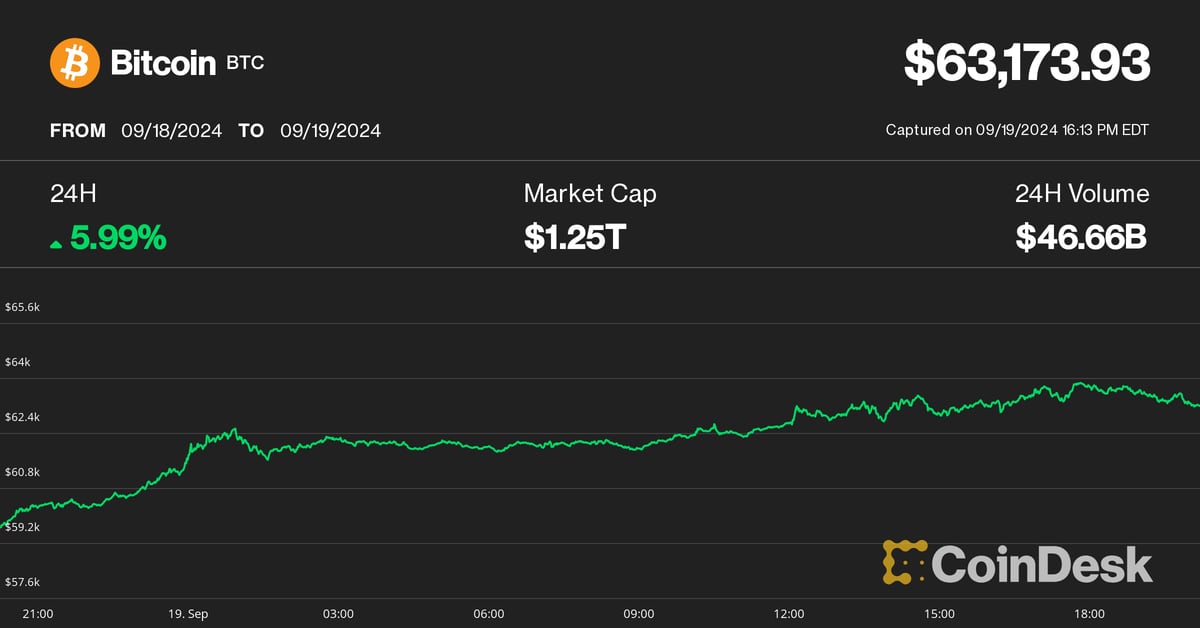

Bitcoin rallied past the $62,000 mark following the U.S. Federal Reserve’s decision to slash borrowing rates, marking the first cut in four years.
The U.S. Federal Reserve cut its benchmark federal funds rate by 50 basis points to 4.75%-5% on Sept. 18, ending an aggressive rate-hiking cycle that has dominated the last year.
The central bank expressed increased confidence in achieving sustainable inflation near the 2% target and stated that the risks to its employment and inflation objectives are now more balanced, according to a recent press release.
This rate reduction is the first since the COVID-19 pandemic disrupted the global economy over four years ago. The move to ease monetary policy has spurred demand for risk assets, as is often the case with lower interest rates, pushing Bitcoin into a bullish trend.
Bitcoin price goes up in response to Fed Rate Cuts
Many analysts believed that the interest rate reductions were already factored into the pricing of riskier assets like bitcoin. However, figures like Arthur Hayes have argued that such moves by the U.S. Federal Reserve could ultimately harm the market, although he was speaking with a long-term outlook. In contrast, the short-term response has seen a favorable impact on Bitcoin’s price.
Before the official announcement, Bitcoin had already climbed from $57,600 to $60,000. Following the Fed’s decision to implement a 50 basis point reduction, Bitcoin experienced significant volatility, with its price fluctuating up and down several times in the hours immediately after the announcement.
At the time of writing, Bitcoin (BTC) has settled down and was trading at $61,969, reflecting a 2.8% increase, according to data from crypto.news. The crypto asset’s daily trading volume had jumped by 17% hovering around $48.2 billion while its market cap stood at $1.22 trillion.
The liquidations have surged to $200 million daily, with the majority coming from short positions. Bitcoin is at the forefront, accounting for $75 million in liquidated positions, followed by Ethereum with $35 million.
Per data from Alternative, Bitcoin’s fear and greed index has now shifted from fear to neutral.
The Fed’s decision followed signals from Chairman Jerome Powell at the Jackson Hole symposium last month, where he hinted at the need for a policy shift amid cooling inflation and rising unemployment.
Market sentiment ahead of Wednesday’s decision was split. Traders were divided on whether the Fed would deliver a 25 bps or a more substantial 50 bps cut. According to the CME FedWatch Tool, the market had priced in a 40% chance of a smaller cut, with a 60% probability of the larger 50 bps reduction, which ultimately materialized.
Stocks dip, Gold peaks
The rate cut also spurred heightened volatility in the precious metals market, with gold prices soaring from $2,550 per ounce to a record high of $2,600, before dipping back to $2,545 and finally settling at $2,567.
Similarly, the U.S. stock market initially saw gains but later experienced slight declines. The S&P 500 began the day at 5,641, peaked near 5,680, but ultimately closed at 5,618. The Nasdaq Composite followed a comparable pattern, opening at 17,663, climbing above 17,800, and finishing at 17,573. The Dow Jones Industrial Average saw less fluctuation yet still concluded the day with a small loss.
While it may be premature to draw broad conclusions, the initial 12-hour period post-rate cut suggests that riskier assets, like cryptocurrencies, have initially benefited from the Fed’s decision. However, only time will reveal if this will prove to be a positive trend or if Hayes’s longer-term pessimistic forecast holds true.






